Ultimate Guide to Exercises for Lumbar Herniated Disc Relief 2
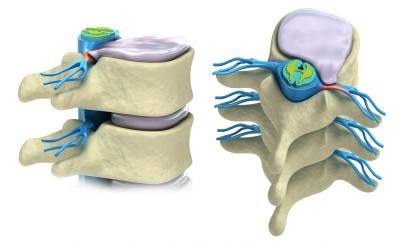
Did you find our previous article, “Disc Herniation Part 1,” helpful but are still battling discomfort? Are you eager to discover exercises that can effectively reposition your herniated disc and enhance your well-being? You’re in the right place.
In this comprehensive guide, we’ll cover:
- Effective Exercises for Repositioning a Herniated Disc: Learn the top movements to gently coax your disc back into alignment, reducing pain and improving mobility.
- Stabilization Techniques to Prevent Disc Displacement: Discover exercises that strengthen your core and back, ensuring your discs stay in place.
Understanding Lumbar Disc Herniation:
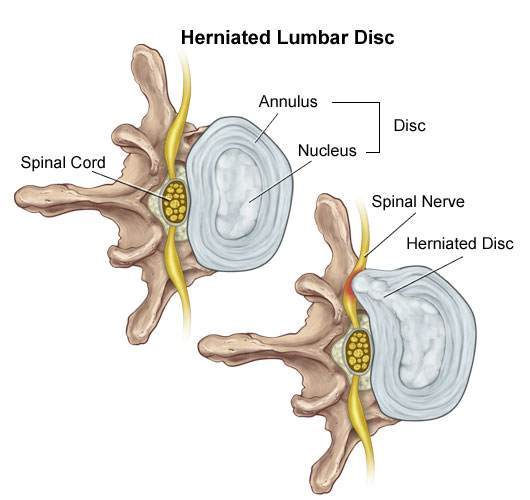
A herniated disc occurs when the disc’s nucleus breaks through the annulus, as shown in the illustration from neurosciences.beaumont.edu. But what triggers this displacement? The primary culprit is forward bending, which compresses the disc (think of it as a jelly-filled doughnut) and can lead to the annulus fracturing, allowing the nucleus to protrude and press against nerves.
Why Does it Hurt?
The disc’s exterior is tough cartilage, while its interior is softer, akin to mucus. Applying pressure on one side forces the inner material to the opposite side, similar to squeezing a doughnut. When a herniated disc or inflammation puts pressure on a nerve, pain ensues. The key to relief is applying counterpressure to reposition the disc.
For a deeper dive into herniated discs, refer to “Disc Herniation Part 1: Best Self-Treatments for Lumbar Disc Herniation.“
How to Apply Counterpressure:
The strategy involves bending your spine backwards or into the extension to shift the disc away from the nerve.
Exercises to Reposition a Herniated Disc: Note of Caution:
Initially, these exercises might intensify your pain slightly. If pain significantly worsens or radiates further down your leg during these exercises, cease immediately and consult a professional.
Exercises for Lumbar Herniated Disc
#1 Prone Lying Lumbar Herniated Disc
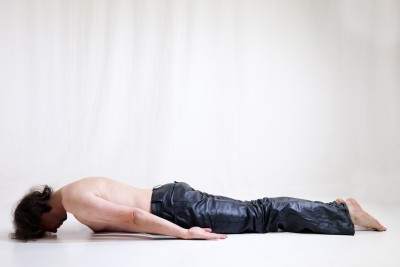
- Lie face down or prone in bed with your elbows tucked in under your side:
- As soon as you get up in the morning you should lie prone (face down). By getting in this position, your lower back becomes more arched, or as doctors say, you increase your lordosis.
- The increased lordosis pushes on the back of the disc helping to bring the nucleus forward into the correct position.
#2 Sphinx pose in Yoga For Lumbar Herniated Disc
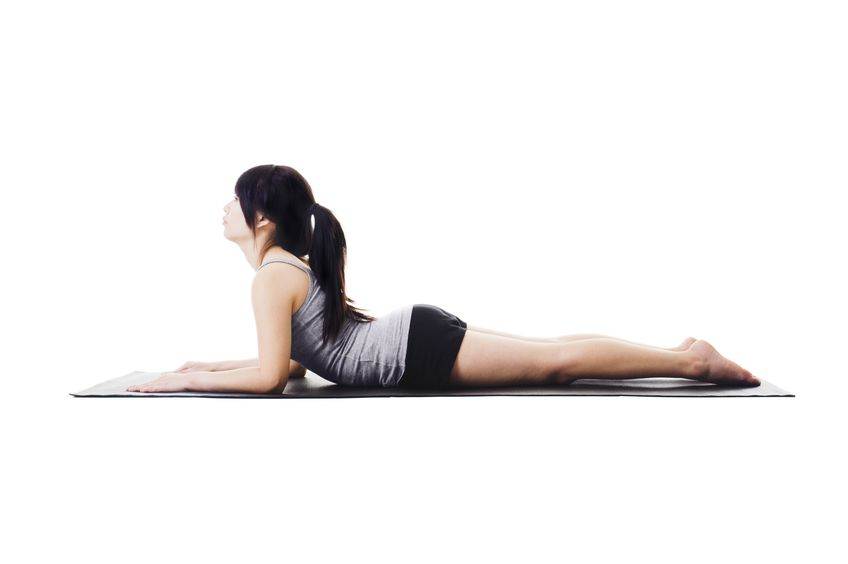
- Get into the prone position lying down on your stomach.
- Next, get on your elbows. If you have a hard time with this position go back into the prone lying position.
- Do these exercises hold each time for 1-2 seconds 6-8 times per set? This exercise can be repeated every two hours throughout the day.
Asses yourself. If the pain has decreased or the pain has moved away from the leg or thigh and into the hip or buttock, this is an improvement. Even if the pain is increased in the back but relieved in the leg this is an improvement and a green light that you should continue this exercise. You also get a green light if there is no difference at all.
- If your self-assessment gives you the green light, move on to the Cobra exercises just below.
- If your thigh or leg pain is worse, then stop right away.
- If your lower back, thighs and legs are the same you get a green light, so move on to the Cobra exercises.
#3 Cobras For Lumbar Herniated Disc
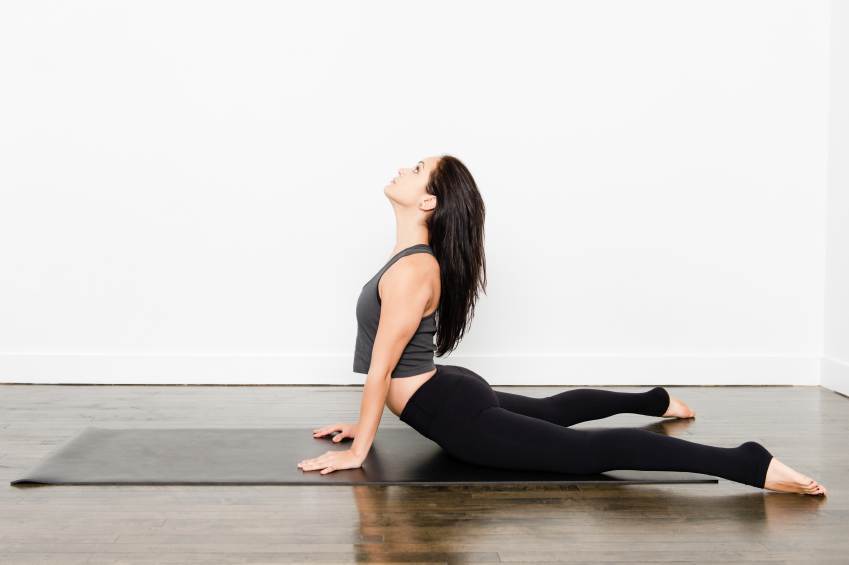
- Lie down face down with your hands underneath your shoulders.
- Push up from as high as you can until your lower back stops you or your elbows are straight.
- The pelvis should still be on the floor and the lower back muscles relaxed.
- Do these exercises hold each time for 1-2 seconds 6-8 times per set? This exercise can be repeated every two hours throughout the day.
Asses yourself. If the pain has decreased or the pain has moved away from the leg or thigh and into the hip or buttock, this is an improvement. Even if the pain is increased in the back but relieved in the leg this is an improvement and a green light that you should continue this exercise. If your thigh or leg pain is worse, then stop right away.
#4 Standing Extensions Lumbar Herniated Disc
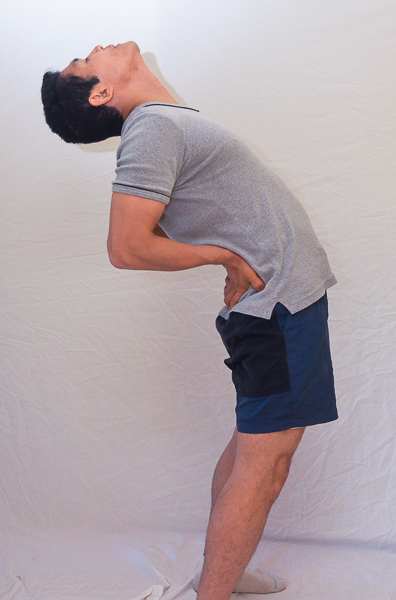
- Stand straight and put your hands behind your hips with your fingers facing down.
- Push your hands into your pelvis so that your lower back arches.
- Don’t use your lower back muscles
- These exercises can be done 6-8 times for 1-2 seconds. This exercise can be repeated every two hours throughout the day.
Stabilization Exercises: Prevent Your Disc From Coming Out By Having A Stable Spine.
#1 Cat-Camel or Cat-Camel For Herniated Disc
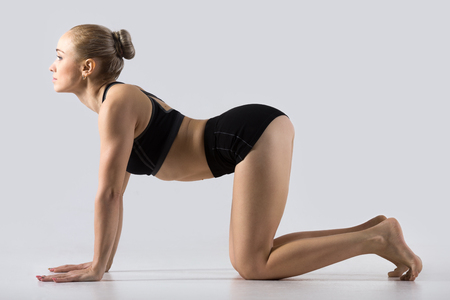
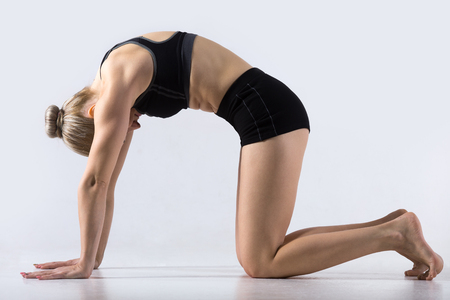
- On all fours with your knees under your hips and hands under your shoulders.
- Inhale and let your belly fall downwards toward the floor as you look up toward the ceiling for 2 seconds.
- Exhale and arch your back up as far as it will go or until you feel pain. You should not feel pain with this exercise, otherwise you are going too high.
- At the same time bend your neck forward and look toward your navel.
#2 Curl-Ups
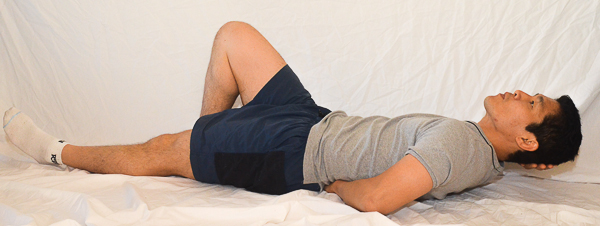
- To start, one foot is bent and the other is straight.
- One forearm goes under the arch of your lower back to support it.
- The other arm is supporting your head.
- Your head and neck come up as one block until your shoulder blades clear the floor.
- Do three sets of 5 working your way up to 10. If it’s easy, then hold for a couple of breaths.
#3 Squats
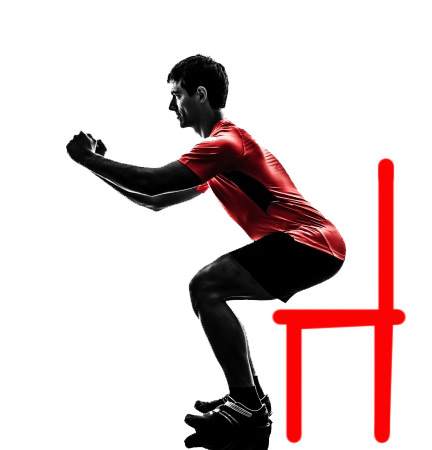
- Stand in front of a chair as if you are going to sit on it.
- Stand with your feet facing slightly more outward than your knee.
- Make sure your butt comes out, and keep lowering your butt until you touch the chair.
- Practice 3 sets of 10.
#4 Bird Dog
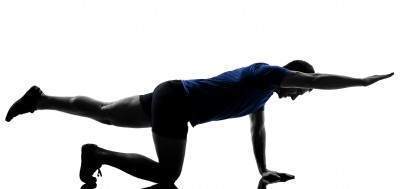
- Get into a crawling position with your hands and feet shoulder-width apart.
- Harden your core by contracting your abs and lower back. This is called bracing.
- Lift your arm first. If this is easy, then lift your leg only. If that is easy, then lift the opposite legs and arms, for example, right leg, and left arm.
- Want to make it tougher? Try lifting an arm and leg on the same side.
- 3 sets of 10. If you are shaking a little or cannot balance quite right, you’re doing the right exercise for you, i.e. lifting just the leg or arm might be easy, but lifting opposite arms and legs might put you off-balance a bit. Make sure you are stable before going to the advanced bird dog.
Tell us what you think in the comments below and like us on Facebook. This Toronto Downtown Chiropractor will answer all questions in the comments section. Let us know your vote for the best Toronto chiropractor in the comments section.
References
1. J Med Genet 2002;39:387-390 doi:10.1136/jmg.39.6.387


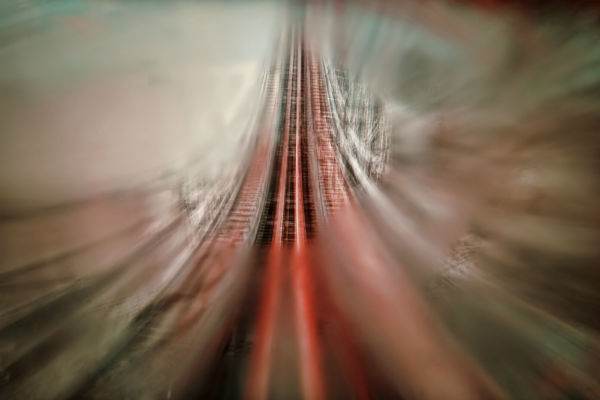

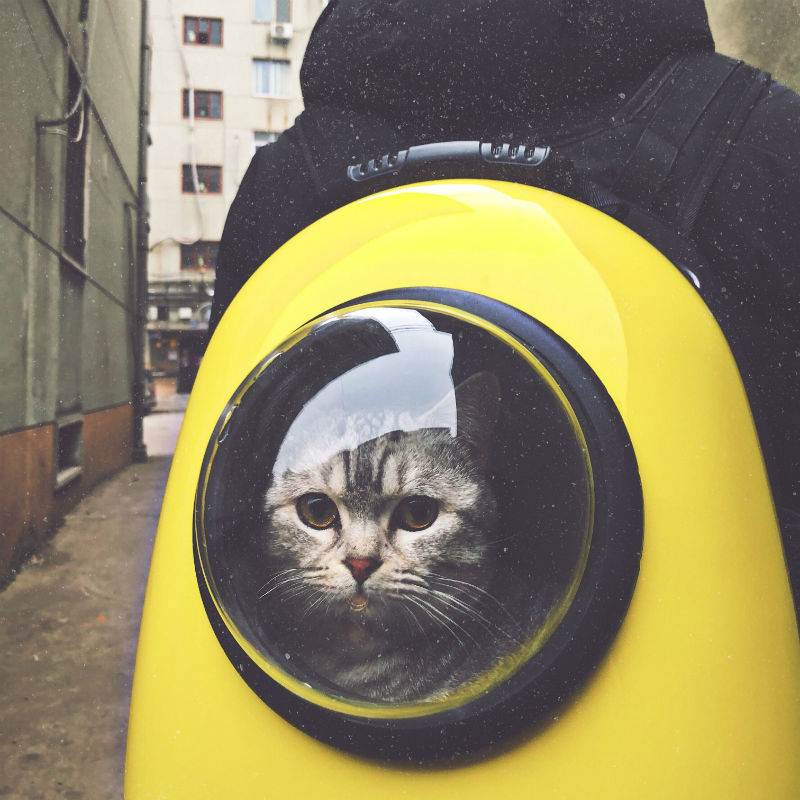
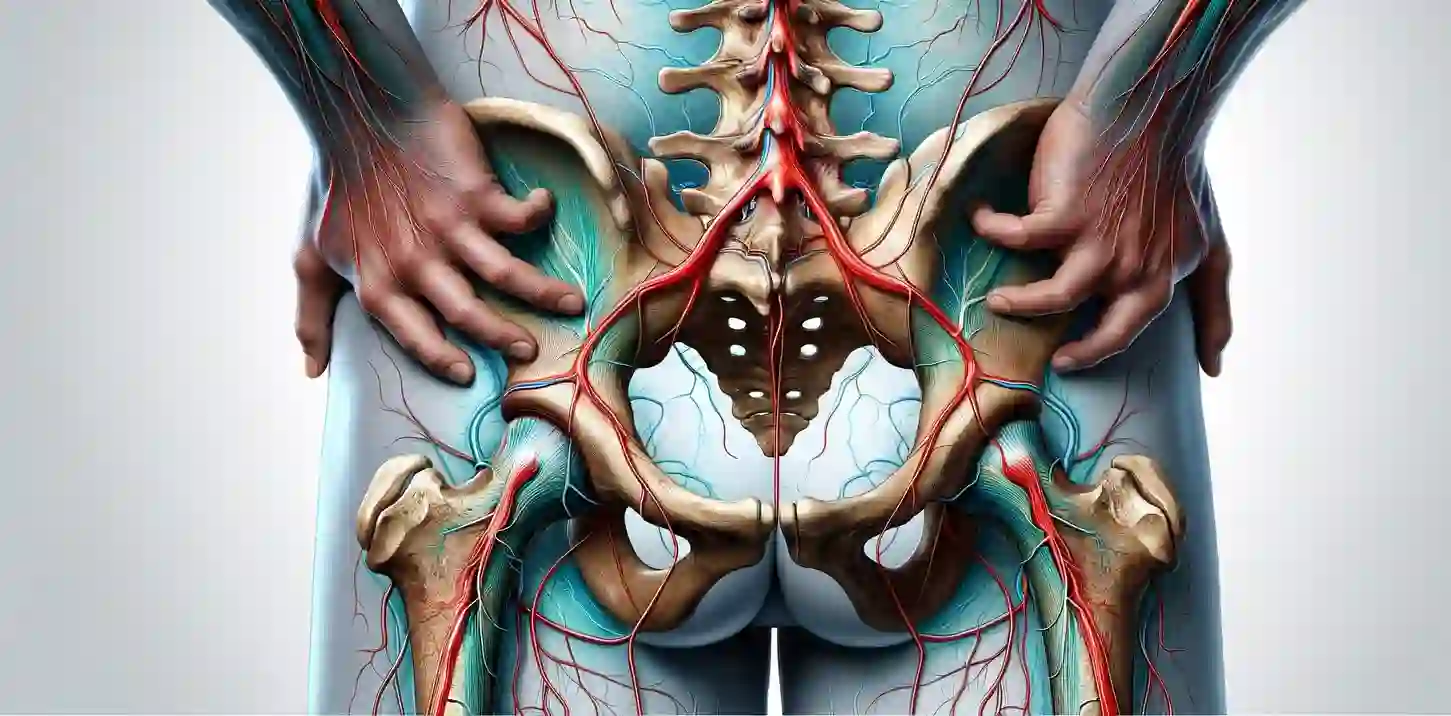
hello sir
i am 20 years old. I am suffering from bulged disc at L5-S1 level. I feel pain and numbness in my left leg after 5-7 minutes walking , otherwise i am comfortable while sitting or lying in bed. I have this pain from approximate 6-7 months. The possible reason may be weight lifting in gym.
Author
Thanks for your question Karanveer. You can try the exercises in this article. However like any exercises you can get worse. You should have your physiotherapist supervise them at least initially. You know you are getting worse if the pain, numbness or tingling goes further down the leg or you it or the symptoms increase in intensity. You need to stop the exercises if you are getting worse.
Hope that helps your herniated disc.
Hi doctor
My MRI report says Annular tear and disc protrusion at L1-L2,L4-L5,L5-S1causing spinal narrowing/Stenosis at these levels causing severe compression traversing neural recess and nerve root with exiting foramina.
Para Central disc bulge at L2-L3,L3-L4 with mild narrowing
Which exercises I need to do Prone push-ups or Knee to Chest?
Author
Thanks for your question Pavan. You have read the other posts judging by your question. I can’t help an MRI as that’s all you say. That would be irresponsible. You need to write a lot more like:
2 years ago,I had a shooting pain on my left lower back and on left side just above hip area for 4 months after carrying heavy loads and also had a traumatic hard fall onto my lower back.Was sent for MRI and results for 1st MRI as shown below;
-Degenerative disc disease at L5/S1
-Posterior annular tear at L5/S1
-Posterior mild line disc protrusion causing mild spinal canal stenosis at L5/S1
I was getting better all along for about a year and half by doing physio therapy excecises but unfortunately,I suffered a relapse pain 2 months ago after carrying heavy loads in an cramp space and in a slightly improper posture.
I then started having additional symtoms such as mild weakness at my left leg and strain pain from my buttocks all the way to calf area at left leg accompanied by the existing shooting pain of lower back on left side just above hip area.
I had my 2nd MRI done last week,findings as below;
-L4-L5:
Disc bulge indenting thecal sac.No significant narrowing of the lateral recesses,spinal canal or neural foramina.
-L5/S1:
Posterocentral and right lateral para central disk protrusion with posterior annular tear causing mild narrowing of the lateral recesses,abutting the right descending S1 nerve root.No significant neural foraminal stenosis.
Please advice me on what are the findings about and what should I do to get it healed and get the pain off.
You need to give me the details without them I can’t help.
Hello Dr Ken. A little bit of history…. last year (may) after shoveling dirt I started to feel my left hamsting tighten up. Not long after that a day or so I noticed my left leg starting to get very tight. At the hamstring. . I went to my GP and she said I had a bulged disk. So she sent me to physio. My physiotherapist told me that is was not a bulged disk and I had pirifomis syndrom. So for year I have been in physio working on streches ect… about 2 months in I started to feel much better. Pain in leg started to go away no more syarica ect… Continued physio up until this date as I’m still going. I was feeling almost 99 percent better until I went on vacation this year (July 1st 2016) and decided to shovel some dirt from a trailor. Almost a few hours later I noticed my left leg starting to tighten up. I was horrified I was falling back into the pain I dealt with last year. So I decided to do some of my stretches and see if I could work the tightness out of my left leg. I shoveled dirt on the Friday and by Saturday afternoon I was on the floor screaming and crying in pain. But this felt worse then last May because I was floor bound. Last May I was able to walk and work and deal with the pain. After about a few days I started trying to walk at short periods. It seemed to get a bit better. I went to physio and I was so tender and soar it was tough to get a assessment done without crying and feeling the pain. Once again she told me it’s probably the pirifomis syndrom. So I decided to push though and continue my streches that I had been doing for a year it worked last time why not this time I also went to work thinking I could deal with the pain and will get over it. I didn’t make it through more then two days of work…. went home and rested and tryed to stay off my feet. Soar soar soar! Well. That following Sunday I had to go to the hospital I was in so much pain. When I got to the hospital I could not even stand for a min. Had all the symptoms from last year plus some…. foot drop, burning down left leg behind calf to the right side and behind the heel. Wow it was intense! I had to lay on the emergency room floor I could not stand. Once the doctor saw me she gave me an assessment and determined that it was a bulged disk. She had me do a few reps of the MacKenzie and the cobra once I could get there. Went to physio 2 times last week now knowing it was a dick issue and started on different streches. long after that about a day or two I noticed the pain travelling up to my thigh and butt and lower back. Doing Mac and cobra every 2 hours as recommended. I started walking a little bit at a time 15 min walk then laydown for a hour or two then 15min walk. Ect…. I thought things were getting better because I could start walking more. But over the last few weeks I’m noticing I can’t walk as far before I get too soar with the pain in my butt and thigh now. I also am having a hard time sleeping as the pain in my thigh is like having a tight mussel makes it impossible to sleep. Is it normal to have a tight muscles after the syatic nerve starts to release? Should I have gotten an MRI to confirm the bulging dick? Only on ani-inflammatory at the moment and lots of Tylenol that dose not do much for the leg. I have a GP schedule for today and I’m going to get stronger pain killers and perhaps muscle relaxant to help get mobile. What’s your opinion on pirifomis syndrom and should I be walking on my leg if it’s soar? I want to try to go back to work in a week or two I’m getting sick of counting the fibers in the carpet all day. I have started your strengtaning excercises and I am trying to move as much as possible. Will laying down too long make things worse? When I lay down should I put a towel or something behind my arch of my back? I have not been able to sleep in the bed in over 3 weeks. I’m on the floor sleeping and it it tough to sleep. Maybe 5hours in the last week. What’s your opinion Ken and thank you for your fantastic Web site. I am not doing any forward extentions! I can only sit for about 5 min tops then my butt starts acting up and I have to lay on my back with my knees up in the air.
Thank you for your time and professionalizm. I really appreciate your opinion. If I could deal with the pain I would drive the 4 hours from ottawa to see you, thank you Ken.
Regards Trevor.
Dose it sound like a bulged or herniated disk?
Cheers.
I forgot to mention I amean a 35 year old male. Thanks again Ken
Author
Thanks for your question Trevor. Sounds like a herniated disc to me. Sounds like the disc has changed positions and you need to change your exercises to suit your particular back. I’ve written in this article general exercises for most types of lower back disc herniations however without an examination I cannot tell you how to customize the exercises.
Doesn’t sound like piriformis syndrome to me. Also to me it sounds like you need a physiotherapist or chiropractor.
Hope that helps your probable disc herniation.
I feel your pain. I herniated L5 S1 nerve playing tennis. I felt the tear but just thought I tweaked my back. I played tennis, worked out, deep sea fished, biked,did cross fit videos for another 2 mos. Then leg day at the gym I felt pain in my leg, left button, hip, calf. ( I had a sore ham prior when I bent over, which I just thought was from squats from workouts) I was on my stomach 5 days couldn’t stand without crying…finally went to hospital in Costa Rica….MRI had epidural injection procedure etc…I flew home day after being discharged….anyway, I started walking lots, starting doing planks 2x a day for 3 min. I do believe this has been what has helped me more than anything. .kept busy…it’s been 3months today, I’m back at the gym, hitting golf balls, planks, and so grateful to be getting stronger. I should mention I had 4 numb toes etc and couldn’t do a calf raise for about a month. I have eaten healthy taking extra vitamins, glocosamine, bananas, turmeric….I have not been on any drugs since a week after the procedure. Maybe I’m just one of the lucky ones but for me the planks and walking helped me alot. I am also doing the Drs suggestions with extensions and lots of stretching. I still have tight left ham but getting better. I wish you luck as I know there is nothing more painful than sciatica…
Author
Thanks for your comment Deany. Sounds like the epidural took away the inflammation and pain which allowed you to do the exercises in the first place. Planks are helpful for stabilization but does nothing help get the disc back into place. If you go back to squats and deadlifts doing heavy lifts you will likely repeat the whole problem again so I wouldn’t do those exercises.
Hope that helps your herniated disc.
Hello Dr. Ken!
Firstly, a huge thank you, your website has been quite helpful.
Secondly, I’ve read the articles but am not clear which exercises will help me.
I’m a 35 year old woman, work in banking as a trader and average 11-12 hour workday.
I have sciatica specifically at left and lower back pain, further details below.
Incident:
Following a few crazy flights and schedule I relocated from Hong Kong to London in March 2016.
In April first week I woke up with a bad inflammation and pain in my left buttock.
Pain went down the leg as if it was swollen but mainly identifiable at the buttock.
At work, since January I was sitting slouched due to bad desk levels and studying at dining table at home for an exam.
It was colder than I’m used to and a very sedentary lifestyle. Previously in hong Kong I’d been using a standing desk for over 2 years prior to this relocation.
Anyways, the process of seeing a doctor or getting my insurance sorted etc was taking a while and I checked NHS website which liberally prescribes ibuprofens and paracetamol’s.
So I used ice packs, paracetamol’s and stretches like forward bends, sideways, drawing knees to chest etc. Except for the tavlets, nithing helped.
I was quite preoccupied with work and studies and dealt with the discomfort but the shooting burning pain in the butt would wake me up at 4 in the morning.
Finally in June I went to physiotherapist and then the GP.
Same prescription (stretches I was doing and ibuprofens and paracetamol’s) was given but I saw no improvement in 2 weeks. I requested a desk raise which took 3 weeks.
I started seeing an osteopath which was good to release some pain and stiffness but not enough to get off the nsaid’s I was popping.
By this time I’d managed to get hold of myospaz which I’ve used in past and helped me tons with pain relief (these are Chlorzoxazine, Diclofenac potassium and paracetamol’s). I’ve been having them for a month now 2 a day and sometimes 3.
The physiotherapist suggested I stop physio as it was not getting better and head to a specialist.
I begged the GP for a referral to an orthopedic specialist so I could finally have this investigated.
The orthopedic immediately asked me to take MRI scan and it revealed that I have 2 degenerative changes.
Left L4-L5 disc prolapse resulting in left L5 compression and a shallow left paracentral L5/S1 disc prolapse resulting in left sided S1 lateral recess narrowing.
I’ve taken a spinal epidural to block the left L5 nerve root 3 days ago.
No painkillers or analgesic taken since, the pain is less.
The positions that give me relief are sleeping on belly with a long pillow b/w my rib and hips.
Other stretches do not really work.
I’m still in a lot of discomfort, completely unable to sit except to go to loo or for a few mins on a chair. I can sit a bit longer in Vajrasan which helps with reading and eating activities but otherwise I’m standing and walking around which isn’t the best for studies and work.
The standing desk is going to take 6 more weeks to be setup.
When I walk around, I get better and the pain disappears for a while too. So every morning its a fight to drag muself out of bed and move around and do dishes which feels like hell since im in pain but its those things which help relieve the pain and im good after ive walked 10-15 mins to work.
But I also tire out many times..
If I sleep more it gets worse.
I’m using icepacks at night since April and wearing a lumbar compression belt since 2 weeks..
My main concerns are:
Which exercises do you reckon I should do? Since nine of my past successes are applicable here.
Shall I continue with osteopathy?
Is this condition permanent or can therapy fix it so I can start running again?
The doctor and a second opinion post my MRI have both mentioned a strong possibility of a surgery which I’d like to avoid.
History:
I’ve had a compression b/w L4-L5 for over 6-7 years which usually gave me lower back muscle spasms from time to time when I’d sit sloched at work for longer hours or wear heels or just have a bumpy cab ride. I’d wake up unable to move or walk and it always got resolved with a few days bedrest, antiinflammatory pills and a few sessions at the physiotherapist following which I’d try to keep and fit and active lifestyle. I have a good core and was able to skip rope upto 15 mins in late 2015. I like hiking and long distance running (half marathons) which I train for every few months and do ok at (am no elite athlete)..
Oh and I tried cat and camel stretches and child’s pose and pigeons pose but none (not nine) are effective anymore.
Author
Thanks for your question Namrata.
Which exercises do you reckon I should do? Since nine of my past successes are applicable here.
Answer: Do the exercises here and see how you do. I don’t know what you mean by “nine of my past successes”
Shall I continue with osteopathy?
Answer: Try the exercises first.
Is this condition permanent or can therapy fix it so I can start running again?
Answer: The problem is permanent and not: It’s a paradox. Most back pain is recurrent meaning that it happens over and over again. Nobody will repair that fully. However you can get rid of the pain. That doesn’t mean the disc still doesn’t have a problem but if you do the right exercises you can keep it at bay or control it for the most part.
Stop all other exercises.
Hope that helps your disc herniation.
Thanks a lot Dr. Ken.
Nine was a typo for none. I’ve done forward bend stretches, pulling knee up and child’s pose stretches in past incidents.
I’ll try the exercises here.
Cheers.
Author
Thanks for your question Namrata. Sound like you made it worse unless you have a special kind of disc problem.
Hope that helps your herniated disc.
Hello Dr. Nakamura!
So I have been having some pains in my lower back, around the lower left sacrum region. It has been about three weeks now, and it has improved but not completely. I don’t have any sciatica or shooting pains down my leg, but I have noticed some muscle spasms. The pain in my back is mostly a dull, achy feeling that becomes a bit more sharp when bending forwards. I can walk just fine, and sitting isn’t uncomfortable either. I am confused as I am not sure whether this pain is due to a ruptured disc or possibly just a muscular issue. I am very active and go to the gym so I am assuming that is where the injury took place. Do you think this sounds like a herniated disc? If so, should I try these exercises?
Thanks so much !!!
Author
Thanks for your question Victoria. I would do all the exercises especially the cobra type exercises. But you have to do it the way I show, not the way they do in Yoga. That can make you worse. Also like any exercises they can make you worse even if done correctly. You know if you are getting worse if the pain, numbness or tingling goes further down the leg. You should then stop the exercises.
Hope that helps your possible herniated disc.
My MRI shows at my L5-S1, there is a diffuse disc bulge and a superimposed central disc protrusion without significant spinal canal stenosis. There is bilateral facet hypertrophy. I have severe right foraminal narrowing. My MRI also shows that there is probable impingement of the exiting right L5 nerve root. I also have mild abductor tendinosis with a small, partial-thickness tear of the gluteus minimus. My pain levels are consistently between 7 & 9 with the most pain in the mornings. My symptoms are mild pain in my right hip, severe right upper calf pain, and moderate pain in the bridge of my right foot. Walking for more than 10 minutes, driving and stairs cause me the most pain. Laying on my back or stomach in the prone position decreases the pain significantly. I’ve been doing cobra, knee to chest, lateral twist, Mckenzie exercise for approx 2 months with no change in the pain levels. I’ve several epidural injections at L5-S1 which gives me relief for approx. 4-6 months before the pain returns. Considering surgery.
Author
Thanks for your question KLW. You are doing a few exercises that are cancelling out the effect of the other. For example Cobra exercises are extension while knee to chest exercises are flexion. Also lateral twist done the wrong way will make you worse. For the most part twisting is not helpful.
I would go to the best physiotherapist or best chiropractor in your area that knows how to customize exercises for you. Those exercises would not be given together by a professional with good knowledge of rehabilitation.
Hope that helps your herniated disc.
Thank you, so for my herniated disc and impingement between L5-S1 I should just stick to extension exercises?
Author
Thanks for your question KLW. What I said was that you should see someone professionally. The extensions may make you worse or better and need to be customized. You could try just the extensions but there are no guarantees.
Hope that helps your herniated disc.
Hi dr..
Hope you are doing well.
Sir iam 29 years old, unmarried female..
Iam.suffering from disc herniation(L2, L3 and l4 l5 region) since last 2 years.. i suffer frm ths pain quite often especially when i try to walk for 10 to 15 mins it aggregates thn all of sudden m unable to walk sit or stand properly..
Am tired of taking pain medicine.. some doctrs recommend me fo epidural injections and some advice for nucleotomy 🙁
Am suffering frm ths pain again.. don’t knw wat to do..
Kindly advice me some therapy i can ask my physiotherapist to do it.
I want to get rid of ths pain 🙁
Waiting for your kind reply
Thankyou.
Author
Thanks for your question Faree. You can try doing repeated knee to chest exercises. Before you do this stand and bend side ways, then backwards then forward in all directions until you feel pain. Note when you feel pain and by how much. Next You lie down on the floor and bring your knee to your chest, hold for 1 sec then bring your feet back down. Repeat 10 times. Then see if you are better by repeating the movements you did while standing.
Hope that helps your possible disc herniation.
Hello sir,
first of all i would like to thank you for all the information you are sharing with us. I am suren from india. From the past 4-5 months, i am suffering from lower back pain and mild sciatic pain/stretch in my left leg.
MRI reveals that
1. their is a mild diffuse posterior buldge of L4-L5 disc with broad based posterocentral component, causing affacement of the anterior epidural fat, bilateral recess narrowing and effacement of the traversing left L5 NERVER ROOT.
2. Changes of mild bilateral facetal arthropathy at L3-L4 to L5-S1 discs.
I am just 24 years old and i am a quite concious about my fitness/physique. Because of this i am unable to go to the gym, and i am quite depressed.
I also went to a known spine surgeon, which advised me with anti-inflammatory medicines, and certain exercises which are forward bending based like lying on floor fave up, and pulling your legs to yourself until your lower back clears the floor unlike you suggested back bending based. Also i am taking physiotherapy sessions from the past 15 days with heat and ultrasound therapy which gives quite temporary relief. Sitting on chair for even 30 mins revives the pain.
Please advice .
Author
Thanks for your question Suren. If bending forward, sitting and rising up from a chair aggravate the pain but standing and walking make the pain better then your surgeon is giving you the wrong exercises and prolonging your pain. Then again I didn’t examine you so I am going by the limited information I have.
I would try the exercises. However exercises can always make you worse. Make sure the first few sessions are supervised by a health care practitioner as you may be doing the exercises wrong.
Hope that helps your herniated disc.
Hello sir my mri report says a mild bulge of L5-S1 disc touching thecal sac. I was advised for rest for a month and pain started reducing doctor adviced one more month rest til the pain goes off completely he cannot advice exercises for me then after two months my pain was reduced to almost 95% he suggested two exercise nw m doin those exercises but my pain is not reduced yet and to be frank I keep lyin on bed whole day while reading while getting down from bed or while getting down frm couch it causes pain in buttocks and also while lying side ways it pains a bit but when I walk der will be no pain. And while sitting for toilet it pains in buttocks and near knees sometimes i feel lik there is no pain sometimes it pains esp while changing positions in sleeping. And m doing standing extension,cobra and sphinx exercises and one more is lyin flat and pushing up both knees til your chin I mean near chest. Lying on bed whole day is bad? And when I do exercise the pain reduces and when I sleep for 6 to 8 hours the pain comes esp while getting down frm bed. What shal I do pls reply
Author
Thanks for your question Sachin. Just do the exercises in this article.
Hope that helps your herniated disc.
Thank you sir ? Sir I hav one doubt does sleeping whole day on bed aggrevates pain?
Author
Thanks for your question Sachin. Bed rest is not recommended by most doctors as there is no benefit after 48 hours according to the research. However many doctors in India recommend it for many type of lower back pain. After a month or two there seems to be good results. The trade off is that you will develop adhesions and be left with intermittent pain usually when bending forward while standing, driving etc…
Hope that helps.
Thanx again doctor ? I wouldn’t be lying on bed henceforth? would keep myself active hope that helps?
Author
You are welcome Sachin.
Hi Dr. Ken,can i show you my MRI result?Thamk you
Author
Thanks for your question Ruel. You can type of the results on this forum.
Hello Dr. I got my second mri to see if my treatment got better in some way it did but Munro shows that I still have a l4-l5 5.0 my posterocentral disc protrusion. A persistent central canal narrowing. There is also a prominent bilateral lateral recess narrowing with mads effect on the bilateral traversing L5 nerve root. My other disc the L5-S1 persistent 6.0 my left posterior paracentral disc protrusion causing significant left lateral recess narrowing and mass effect on the traversing left S1. I have already done decompression and some patches, is been almost a year . But this two disc haven’t gotten better , my chiropractor told me to don’t do extension. Exercise because of the narrowing. IDK what also to doc. The pain has decrease from a year but I still have pain the lower back area and a little bit of numbness on the bottom from of my left feet . What exercise should helped me decreased this herniated disc .
Author
First, you don’t treat the MRI Diego. This means that you are not trying to get the MRI better. If you wanted to do that you will never get better. Why, it’s because when people get better from disc herniations often they still have a herniation but the pain is gone. Some cases the disc herniation goes back in which shows up on MRI, in other cases the MRI looks the same. Your treatment should focus on getting your body and symptoms better and not the MRI. For example I have people that have a fracture in their lower back called a pars fracture. You are not supposed to extend or make their spine go backwards. However their pain gets better with extensions. Why? The muscles of the back are stable enough to hold the spine there so that person isn’t experiencing pain from the fracture. Their pain is from a disc that is bulging that you wouldn’t see on MRI as you are lying down which takes pressure off the disc (when taking an MRI). That’s why you have to see how the body is functioning and not rely on images. Imaging and MRI are great when used properly and not used as a crutch for diagnosis.
Why don’t you try the chiropractor first to see if they can get you better. If not try the exercises but with supervision with someone familiar with the exercises ( not the chiropractor) at least initially as they may need to be customized to suit you. If they don’t know how to customize they are not the person to treat you. Cook book treatment only helps some of the people, some of the time.
Hope that helps your herniated disc.
Hello sir, my mother is suffering pain in her leg muscle,feet and thigh since 4-5 years….In her MRI scan it has been seen that she is suffering from the disc bulge at L5-S1 level causing compression of thecal sac and b/1 neural foraminal nerve roots in the lateral recess…[AP Dimensions of spinal canal in mm is — L5-S1=08 mm] …Doctor gave some medicine and advised for doing exercises….but her pain has not cured even pain is increasing day by da,,
PLEASE DOCTOR GIVE SOME SUGGESTION ABOUT THIS…………..
Author
Thanks for your question Sunanda. When the pain is going to the feet the problem is often more difficult. I would get a another opinion from someone that can examine her.
Hope that helps her herniated disc.
Dear Sir,
When I searching about spinal chord details I have found some crucial suggestion leave by you about Neurological area.
Sir after MRI the impression
L3-L4: disc degeneration with posterior and bilateral posterolateral disc bulge with superimposed right posterolateral disc extrusion with superior migration seen at this level.
Causing spinal canal stenosis and right neural foramen compromise. Dr. Says that it need surgery and prescribed me DOLO650 medicine for some days,
So doctor what should I do whether it can be cured through exercise or any other way. Plz doctor suggest me a vital step to be follow.
Author
Thanks for your question Rintu. You need to read the other comments. I don’t give advice based on MRI. You need to give extremely detailed history or your symptoms.
Hi Ken,
I have some minor disk bulge (1mm on MRI) in the lower spine affecting the sciatic nerve. Could you please help me understand how this small bulge can cause nerve (electrical) pain down my leg after running on a flat surface? Hiking, mountain climbing, gym stepper, skiing is fine, only running is causing problems. And also would you know if the pain can skip parts along the sciatic nerve? For example, occasionally you get ankle pain but not hamstring and calf pain at the same time. How can this be? If the sciatic nerve is pinched in the lower spine you’d feel pain along the whole nerve length – it makes no sense for the pain to skip nerve sections. Is it true that the vast majority of people (especially ones like me over 45) have bulges (and even 7mm hernias) and have no pain? So, do you think MRI is a useless tool? And if disk fusions which get rid of the nerve pinch (as there is no disk to pinch a nerve) do not get rid of the pain (as virtually none reportedly do), would you think that the back and leg pain have nothing to do with a pinched nerve in the spine? I am confused about this whole thing…hopefully you can shed some light on this. Thank you Ken, Chad
Author
Thanks for your question Chad. I think you are thinking too hard about things. First an MRI is not real life. Does an MRI take a picture of you while you are sitting, standing or running? The answer is no. For most MRIs they can only make a picture while you are lying down. So that disc can stick out more when doing other things.
1. Yes it’s possible for the pain to skip parts. I see it all the time. Sometimes the disc is no longer pinching the nerve and other muscles have gotten tight from the previous pinching and the muscles haven’t let go causing a pinching locally. Other times it’s still the disc and it’s like there is a short circuit. Most times it’s a combination. How do I know this? I treat one or the other but not both and see what happens.
2. MRI is useful when used properly. For most lower back pain and sciatica it’s not necessary as diagnosis is by history and exam. The MRI is just for confirmation.
Hope that helps your herniated disc.
Thanks Doctor. That makes sense. In the meantime I saw a chiropractor in the USA. He did a bunch of orthopedic and neurological tests for lower spine disc herniation. All were negative! So the MRI says I have a bulging disk, the chiropractor’s test say I don’t, and I do have symptoms: mild lower back muscle spasm, and electrical pain down my leg (only) after running for few miles. I am trying your exercises to see if they’ll help. Thank you, Chad
Author
Thanks for your comment Chad. Why don’t you do the chiropractic treatment first without the exercises that way you will know what it working. If the exercises are helping then you don’t need to go see the chiropractor. Either way you need to isolate what makes you better or worse don’t do both.
Hope that helps your possible disc herniation.
I have minimal bulge at L3, L4 and L5 S1, after practising exercises and yoga i am feeling better can i start push ups .
Author
Thanks for your question Deepanshu. Push ups should not harm you if done right.
Hope that helps your herniated disc.
Hi. I’m a 48 yrs old guy and my recent MRI has shown L1-L2 disc extrusion and L5-S1 disc bulging. I don’t have much pain- actually some pinching on the L1-L2 area after some prolonged sitting and some time flashing feeling in the leg, esp calf when lieing down. I used to jump rope (3000 – 16*250, HIIT, on a shock-abosrober playground surface, correct technique) and declined sit-ups (45 times- fixed feet, declined situp bench). I used to do them everyday (along with some other exercises) but recently I just do them twice a wek in weekends. I can still do both ot these exercises and there is no pain afterward.Actually I feel better in the b ack and legs afterward.
The question is can I continue my jumping rope and declined sit-ups? or should I modify/abandon them?
btw, I’ve been using exercises in this page for about a week and feel gool afterward. Thank you!
I h
Hello sir, my mother is having severe pain in her back and down the legs from last 3-4 months. After consulting the neurosurgeon and MRI Scan it came to notice that she is suffering from the Disc Bulge L3-4, L4-5, L5-S1 intervertebral discs causing significant indentation of the thecal discs. Doctor advised her some medications and bed rest for couple of months. I am so worried about this. Can you please tell us what shall we do about this ? Thanks in advance. Really looking forward for your reply.
Author
Thanks for your question Sachin. I would see the best physiotherapist or best chiropractor in your area. Bed rest often makes things worse.
Hope that helps your mom’s herniated disc.
Thanks for your reply Doc. Let’s hope my mom gets well soon and able to walk like before 🙂
Author
You are welcome Sachin.
Dear Sir, I am from Pakistan. I am 22 years of age and I am a student. I have sever lower back pain and a sever pain in my left leg. When I walk or stand for a time of 20-30 minutes there is a numbness and pain in buttock and leg. I am suffering from this pain for six months. To exmine MRI report my doctor said that it is disc slipping case and he advised me for operation. Please let me know that how can I cure this. I am very anxious about this.
Author
Thanks for your question Abdul. From my experience with actual patients that have come from India and Pakistan and from the thousands of people that have told me their stories on this website from India and Pakistan i can say that the even when they give me detailed information often times it appears that an operation is not needed. In fact when the doctor doesn’t recommend conservative care before doing surgery or recommending surgery unless it is an emergency situation it is unethical. The numerous examples I have been able to follow-up in person and otherwise confirm this fact.
I don’t know about your particular case and I haven’t examined you so but the fact about conservative care is certain. If they didn’t already operate than it’s not an emergency. You should try doing the exercises or do chiropractic or physiotherapy. The exercises cannot be done without supervision from a chiropractor or physiotherapist as when you have leg pain you will likely get worse unless the exercises are modified for your specific needs.
Hope that helps your herniated disc.
Thanks a lot for your response.
Author
You are welcome.
Hello dr
Thank you for the information you have provided.
Based on my mri that is taken one week since i slipped and fell on my left foot i have annulus tear and paracentral left protrusion disc on s1 l5. When that happened i didnt have any pain symptom just little tingling and numbness in my left foot ankle. Now after 4 weeks my symptoms are getting bigger. I mean after i considered everything that is needed to do to heal my herniation i developed pain shooting to my rear left leg and sometimes both of my legs but the signs on my foot and ankle are almost gone and no numbness just a little weakness. Is it a sign of worsening situation or its common ?
Thank u
Author
Thanks for your question Arash. It’s not clear if you fell and hurt your foot or ankle. You just say you slipped. After 4 weeks your symptoms are bigger? What symptoms are bigger. Do you have back pain? You need to be concise and not vague. I cannot help based on what you tell me.
Thank you Dr Nakamura for your advice
The pain and numbness is gone now and my self confidence is gone too I started to walk and doing my normal activity I just don’t know what to do and what not to do ,I am a scubadiving Instructor and I also need to drive a truck to get back to work I’m just too afraid to do it. Its been 6 weeks that I’ve been at home should I get more rest or should I go back to work please advise,thank you for your time
Sinserly Fariborze
Author
Thanks for your question Farizorze. You should go back to your normal activities and live life. Go back to work right away, staying home doesn’t help.
Hope that helps your herniated disc.